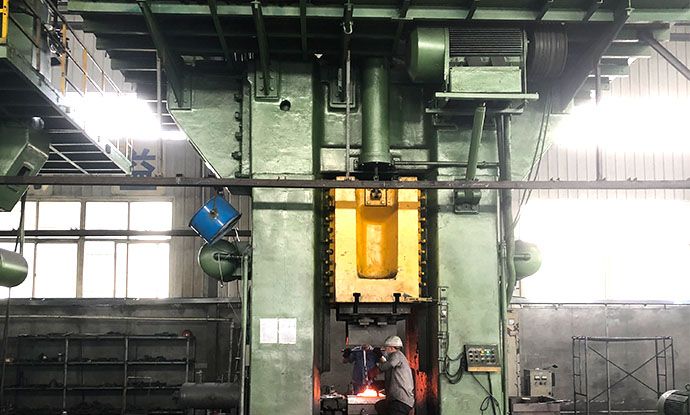Add: Tongji Industrial Zone,JimoQingdao China 266228
Mobile: 86-18653233625 (WhatApp, WeChat)
E-mail: info@segerindustrial.com
Tel: 86 532 68893719
Fax:86 532 85698271
December 09, 2020
Forging Introduction
Forging is a method of using a forging machine to press a metal blank to produce a plasticity deformation to obtain a certain mechanical properties, shapes and sizes. It could remove the casting loose of metal in the process of smelting,optimize the microstructure. And generally, the mechanical properties of forging will be better than the casting parts in same material because of saving the complete metal streamline. In the related machinery, the important parts with high load and severe working conditions are almost used forging, in addition to the simple shape of the available rolling plate, profiles or welding parts.Forging Temperature
The recrystallization temperature of the steel is about 727 ℃, but 800 ℃ is used as the dividing line. The hot forging is higher than 800 ℃. It is called warm forging or semi-hot forging between 300 and 800 ℃.Cold forging will be in room temperature .
Most of the industry forging parts are hot forging, warm forging and cold forging are mainly used for automobiles, general machinery and other forging parts, and they could save materials effectively.
Forging Material
Forging materials are mainly composed of various components of carbon steel and alloy steel, followed by aluminum, magnesium, copper, titanium and its alloys. The original state of the material is bar, ingot, metal powder and liquid metal. The ratio of the cross-sectional area of the metal before deformation to the cross-sectional area after deformation is called the forging ratio. Correct selection of forging ratio, reasonable heating temperature and holding time, reasonable initial forging temperature and final forging temperature, reasonable deformation and deformation speed to improve product quality and reduce costs have a great relationship.

Forging Process
Different forging methods have different processes, in which the process of hot forging is the longest, the general order: forging blank cutting,forging blank heating,roll forging blanking, forging forming, trimming, punching, correction, intermediate inspection, inspection of size and surface defects, heat treatment, cleaning, correction, inspection, important forging parts also through chemical composition analysis, mechanical properties, residual stress and other tests and non-destructive testing.